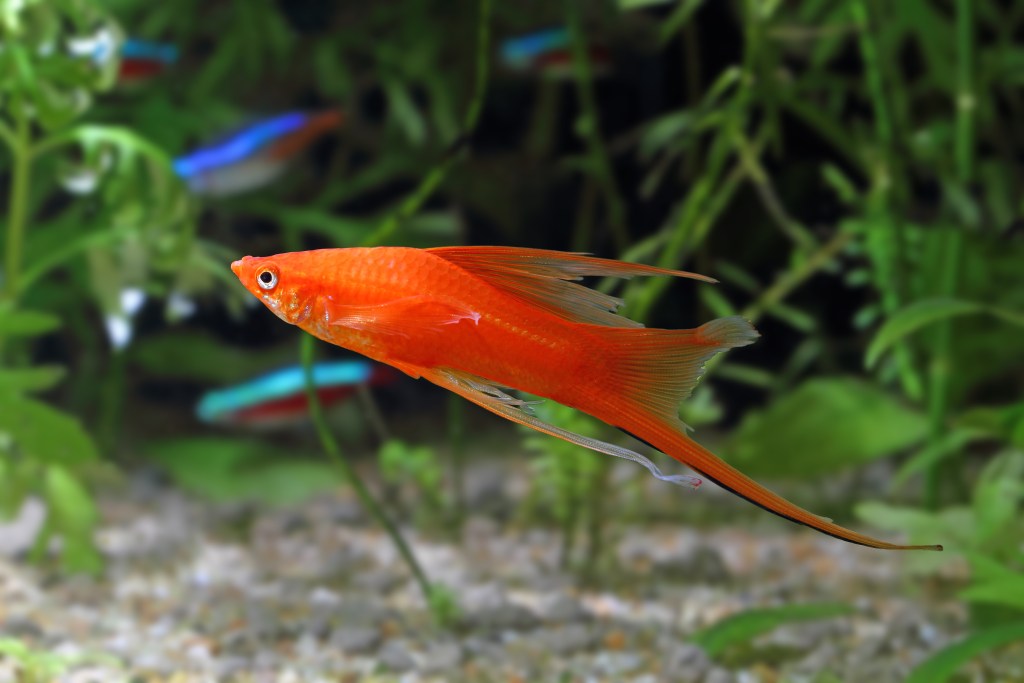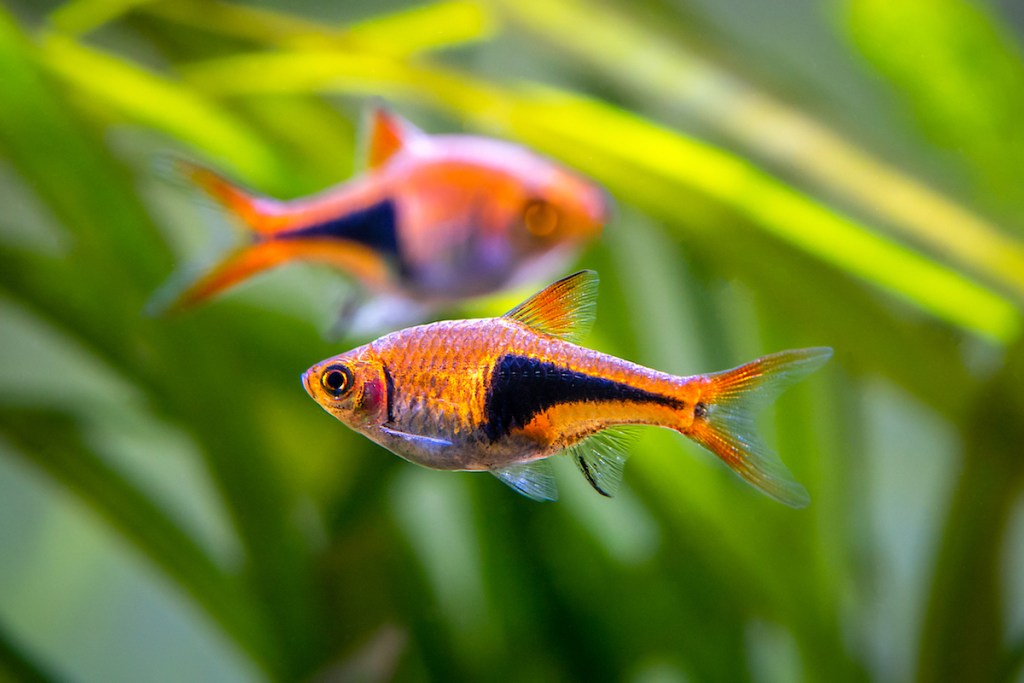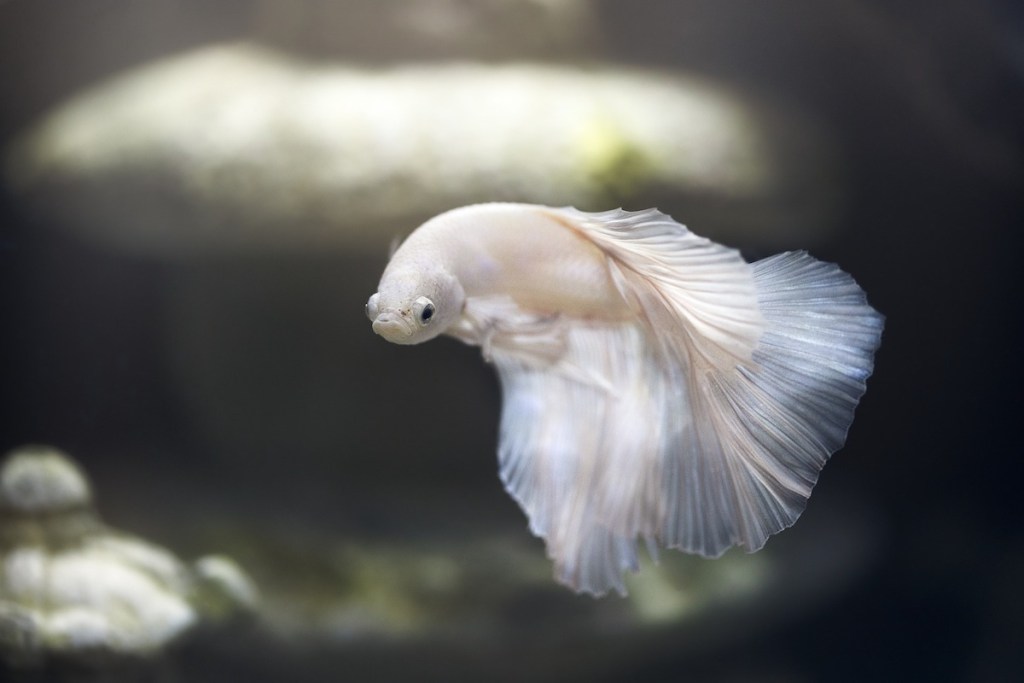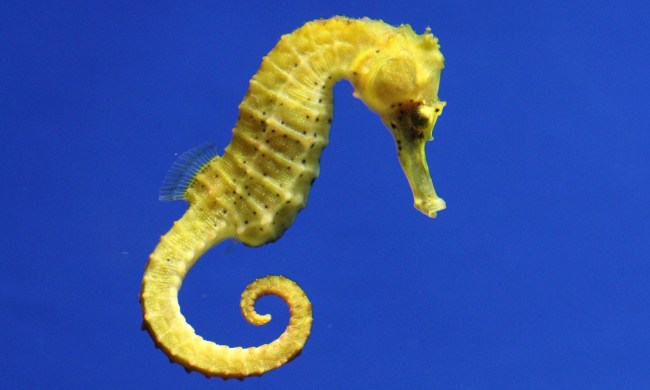Freshwater fish have a lot going for them, including their beautiful scales, fun personalities, and low-maintenance needs. Beginner aquarists should stay away from more challenging saltwater tanks and some of the trickier fish out there. But there are tons of cool freshwater fish to consider, whether you’re just setting out or have a few aquariums already decorating your home. If you want a new freshwater tropical fish (or several), check out these species for your tank.

Swordtails
We’re starting with this fish because swordtails live peacefully with others (though don’t put males together). That means they make a great addition to an existing aquarium, assuming you have a couple of gentle fish already in there. Never mix aggressive fish with these guys as they might bully the little swordtails around. You’ll love having them in your tank, especially the males, who have the iconic long tail that gives them their medieval-esque name. Breeding has also created a number of gorgeous colors, so you have your pick of hues when you choose your new pets.
Neon tetras
Unlike the swordtails, tetras can be kept together in bunches. They love to school and so should be in groups of six or more. However, they can also live in a community habitat with other small fish. In fact, you don’t want this species to be the first pet to move into the neighborhood since they don’t do well in a newly minted tank. Instead, add them to a more seasoned tank once you have a few sweet animals in there already. Neon tetras are quite finicky, so even if you wait until conditions are perfect, you probably won’t be able to breed them.
Guppies
These guys actually go pretty well with neon tetras but can also live in groups of other guppies. Careful, though: Unlike the tetras, guppies get pregnant extremely easily, and you’ll have a tank full of them if you keep around any boys. Sadly, the males are also the more vibrant, which means you’re losing out on some of that color if you just stick with lady fish. You also want to avoid some of the designer colors that come as a result of inbreeding and bring all kinds of health problems.

Harlequin rasboras
This fish is a knockout, with a coppery reddish color that looks amazing when you house a small school. They will go well with some of the others on this list, but they also are hard to breed, which might be a good thing. You’ll want to have live plants in their tank, as that will give them a place to hide and a small reminder of home. Rasboras also prefer to eat live food, so plan your aquarium carefully around who will eat what before adding each fish.
Kuhli loaches
It’s good to add a bottom dweller to your tank — they look cool and help clean. You’ll frequently see these scavengers on the aquarium floor looking for scraps. They, too, enjoy the company of their kind and will get along with many other fish. However, these loaches are pretty shy and have an ultrarelaxed personality. Keep in mind, kuhlis take a bit more expertise, so don’t add them to your first tank if you don’t have as much experience.
Gouramis
Gouramis are unique in one thing: They can breathe air. You’ll spot your fish swimming to the surface to gulp in some breaths occasionally if you have some of these in your tank. Set up your aquarium with that in mind, focusing more on the top of the tank and getting a very secure lid to prevent them from leaping out of it. Some species require quite large setups, and males will need to be solitary, though females do pair well with other big fish at times.

Bettas
Known for being loners, the exotic betta attracts fish lovers for good reason. Even if they rarely do well with other fish, you can enjoy interacting with one instead, as he will play with mirrors or other toys. While bettas are definitely a beginner fish, you don’t want to make the common mistakes of putting them in too small a tank, which will get dirty quickly, or letting the water get too cold. Still, bettas make a great companion when you want a lone fish with a relatively simple setup.
Remember that any time you bring home a new fish, especially if you’re adding to an existing aquarium, you need to take certain precautions. Make sure the new animals adjust well to the environment and do a few extra water tests after adding them to the habitat. Never overcrowd tanks — your fish need lots of space to happily swim around. Also, while you can get a pretty good idea of which swimmers will be suited for communal living, you should check in with your local store first to confirm that your newest addition will fit well into the existing ecosystem.



